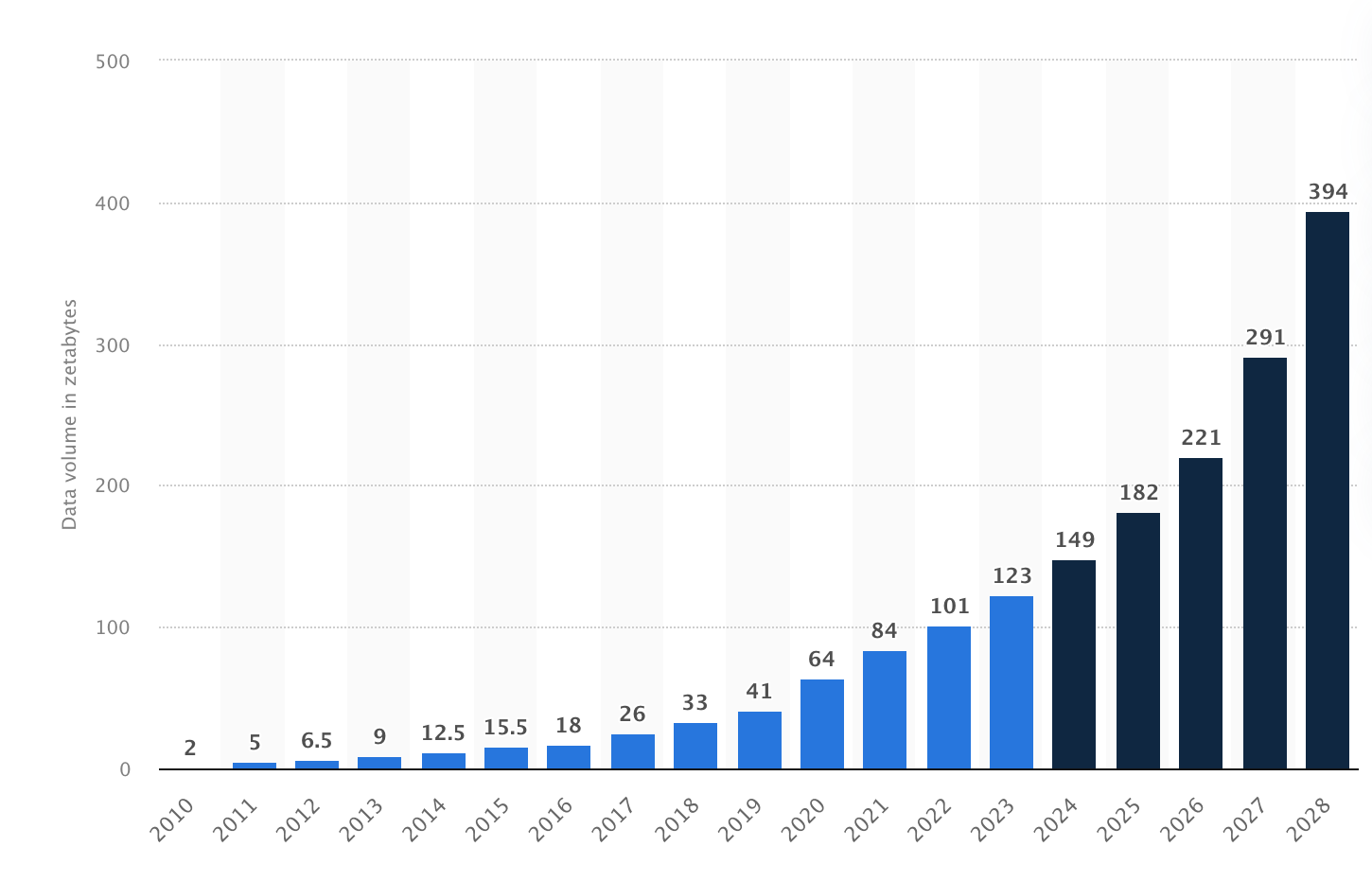Big ideas for 2025: Open-source intel goes mainstream
"The opportunity for industry is immense," argues Colin Robertson, Director of Roke Intelligence

Data has long been touted as the “new oil". we know that companies run on it, and we know that the optimal use and analysis of data can be a significant factor in making companies profitable (or not). We also know that like prospecting for oil, investing in unique datasets up front can be an expensive enterprise. If it’s free, however, that initial investment can be considerably less.
This is the nature of open-source intelligence (OSINT), where the power of data that is either freely available or available to purchase at much lower costs is harnessed and used to deliver real business advantage, and it’s set to revolutionise industries throughout 2025.
From data lakes to data oceans...

The growth in sheer quantity of data and the diversity in sources and types of data is mind-boggling. Statistics estimate that the quantity of new data generated today will more than double to nearly 400 zettabytes by 2028 (a zettabyte is roughly equivalent to 250 billion DVDs of data – if that helps!). A big chunk of that data will be ‘open’, meaning either free to use or available to buy. Clearly, with so much available data, the opportunities to create meaningful insights, otherwise known as Open-Source Intelligence (OSINT) and thus real-world benefits is huge and growing.
OSINT will drive innovation, efficiency, and competitiveness – and this will be in industries that are outside of those that are traditionally associated with it, such as defence and national security. The fact is that OSINT is expanding its reach as organisations across multiple sectors recognise the potential of publicly available data to transform operations.
Data-driven decision-making is the new era we find ourselves in, and industries such as commodities, logistics, and maritime are and should be poised to adopt OSINT to gain both actionable insights and economic advantage.
The growing credibility of OSINT
Advances in data analytics, AI, and geospatial technologies have enhanced the accuracy, reliability, and timeliness of insights derived from open sources. We’re already seeing examples of OSINT being used to great effect in journalism (see Bellingcat), including Reuters’ special report on How Iran Moves Sanctioned Oil Around the World for which Roke Intelligence provided data analysis.
Today’s OSINT is not limited to scraping social media or public documents. Data that was once exclusively available to very well-funded government departments and agencies is now available to buy online as easily as buying a Spotify or Audible subscription. Satellite imagery, synthetic aperture radar, trade data, and environmental monitoring are all under this banner, offering a granular picture of the world. As verification tools and techniques improve, businesses that once relied solely on proprietary data are now discovering that OSINT can meet and exceed standards for reliability. Modern user interface technologies such a 3D virtual environments and large language models allow users to view, manipulate and interpret complex data sets accurately and efficiently.
We also can’t forget one of the most compelling business advantages of OSINT: cost-efficiency. Closed or proprietary datasets often require significant investment, acquisition fees, maintenance and integration costs, such as launching satellites or building networks of sensors. By adopting and using open-source data, organisations can reduce dataset costs, redirecting resources toward further innovation, scaling up operations or simply improving the bottom line. As a very simplified example: logistics companies can use publicly available geospatial data, social media analysis and weather models to dynamically optimise transit routes, saving millions in fuel and operational costs. In industries where profit margins can be razor-thin, these cost savings can become a critical differentiator.
Opportunities across industries

The potential for organisations that have traditionally operated within closed intelligence ecosystems are also significant. Government departments and agencies rely on intelligence to provide insights and advice to decision-makers and have evolved systems over literally hundreds of years for this. While there is obviously an enduring need for high quality, highly resilient and dependable exquisite closed-source intelligence, this also brings with it disadvantages such as high acquisition costs and maintenance (classified networks, etc.) and sensitivities that place limitations on the ability for intelligence to be easily shared (so limiting its value). Making greater use of OSINT in these organisations, fusing it with traditional intelligence, offers opportunities to reduce costs (potentially freeing up valuable resources to develop more truly exquisite closed-course intelligence) and provides opportunities to share OSINT more widely with partners.
Commercial maritime organisations are already turning to OSINT for vessel tracking, risk assessments, and compliance. Open AIS (Automatic Identification System) data, combined with publicly available weather patterns, helps shipping companies plan efficient and safer routes. It can also help with identifying and uprooting more nefarious activities such as the theft and the breaking of sanctions. This type of activity has tracked ships, analysed their ports of call, the trains that supply them, and then the waterlines the ships themselves have. All through open-source data. It’s honestly remarkable.
For all industries, the future of OSINT doesn’t just lie in its standalone capabilities but also in its integration with proprietary datasets. This hybrid approach is more likely to allow organisations to extract the best of both worlds: the cost-effectiveness and breadth of open data paired with the depth and exclusivity of proprietary systems. Commodities firms could use open-source weather data to complement its proprietary market models, enhancing both accuracy and context, for example.
What we all must bear in mind, even though it is exciting, is that OSINT adoption is not without challenges. There are concerns over data validity, the volume of information to process, and cybersecurity risks that persist. While many of these challenges can be mitigated by advancements in AI and machine learning, the human aspect is always going to be critical. Skills, policies and standards that enable and support communities of OSINT professionals who can plan, execute and manage analysis functions will be increasingly important for ensuring it is used ethically and securely.
Why 2025 is the tipping point
Several factors will make 2025 the pivotal year for OSINT.
First, the proliferation and improvement of AI and ML tools is making OSINT more accessible and actionable than ever before.
Second, geopolitics is going wild and associated economic factors are driving organisations to seek broader sources of information to help identify and mitigate risks or to create competitive advantage
Finally, sustainability goals are prompting businesses to find innovative, low-cost solutions, and OSINT fits that need perfectly.
All of this means that embracing OSINT is not simply a cost-cutting measure but an important investment in agility, innovation and risk management. As the credibility and utility of open-source data grows, early adopters will secure a competitive edge capitalising on emerging opportunities.
The future is open, and the opportunities are vast. It’s time to act upon them.
Find out more about Roke Intelligence.
Have you got a story or insights to share? Get in touch and let us know.




